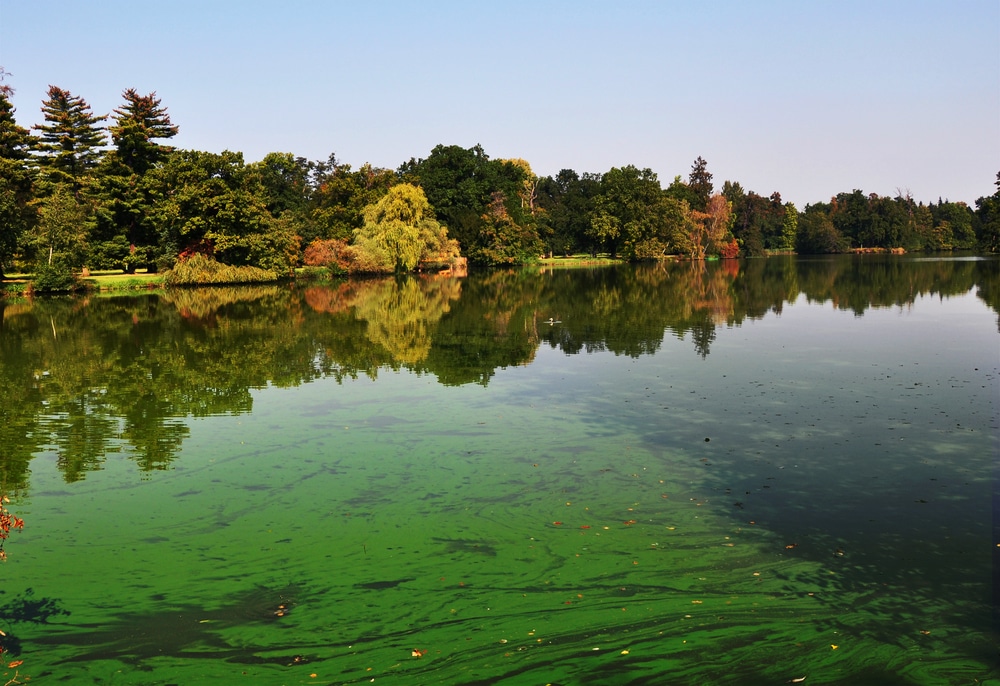Ecologists from the University of Michigan have found that the algae blooms plaguing North American lakes in the summer may protect important freshwater crustaceans called Daphnia from fungal infection.

sangriana | Shutterstock
The hazardous cyanobacteria blooms that pose a threat to humans and their pets by producing liver toxins, may also confer protective effects to Daphnia. Daphnia are tiny crustaceans that play a key role in the freshwater food chain and are an important source of food for many fish.
The lab-based study showed that Daphnia, also commonly referred to as the “water flea,” become resistant to fungal infection when they consume the toxin.
Scientists have known for decades that animals seek out medicinal herbs to treat illness, but in recent years, they have realised that animal “self-medication” may be much more widespread than had previously been thought.
However, the current lab-based study does not demonstrate that Daphnia are self-medicating in the wild; researchers would have to show the crustaceans are preferentially selecting the toxin-producing cyanobacteria as a food source in order to reduce their risk of disease.
What the study does present is strong evidence that plant toxins consumed by Daphnia confer protective properties.
Fungal pathogens have devastating impacts on crops, wildlife, and even peopleTo me, the idea that compounds for fighting those might be just below the surface of our local lakes is really exciting."
Meghan Duffy, Co-author
As reported in the journal Proceedings of the Royal Society B., Kristel Sánchez and colleagues raised Daphnia in the laboratory and fed them one of eight species of green algae or cyanobacteria.
One of the cyanobacteria species was Microcystis, which commonly forms the blooms that plague Lake Erie every summer.
Certain Microcystis species produce the liver toxin microcystin, so the team added pure microcystin to some of the Microcystis cultures to reflect the levels commonly seen during cyanobacteria blooms.
The Daphnia were then exposed to a common fungal parasite and a common bacterial parasite that they consume and become infected with in the wild.
The team reports that the diets had a significant effect on the incidence of fungal, but not bacterial infection.
Two of the cyanobacteria diets, including the one containing pure microcystin, completely prevented fungal infection. Daphnia fed just the Microcystis diet, without additional microcystin, only had very low levels of fungal infection. Daphnia that consumed the green alga Chlorella were also completely protected against fungal infection.
In total, four of the nine test diets exhibited strong anti-fungal effects.
The fact that nearly half of the diet treatments showed some sort of medicinal effect was really surprising and suggests that we are not paying enough attention to the mechanism of self-medication in aquatic ecosystems."
Kristel Sánchez, Lead Researcher
Next, the researchers plan to look for evidence of self-medication among the Daphnia and to further explore the anti-microbial properties of the toxin that protected against fungal infection.
Disclaimer: The views expressed here are those of the author expressed in their private capacity and do not necessarily represent the views of AZoM.com Limited T/A AZoNetwork the owner and operator of this website. This disclaimer forms part of the Terms and conditions of use of this website.